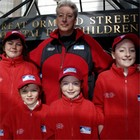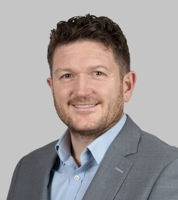12 March 2007

NINE healthy British children, aged 6 to 13, are to travel to Mount Everest to take part in a ground-breaking medical study that aims to develop new treatments for critically ill children and those with both breathing and sleep problems.
The Smiths Medical Young Everest Study (SMYES) will investigate how the children cope with low oxygen levels on the worlds highest mountain.
Doctors do not yet fully understand childrens responses to low oxygen levels, which are common in very sick children and can be fatal.
By investigating how healthy childrens bodies cope and adapt at altitude, the SMYES team hopes to improve the chances of survival for very sick children. It also aims to improve the quality of life of those with chronic/long term lung diseases and to develop new methods of detecting and treating children with disturbed sleep patterns.
The study is being conducted by doctors and scientists from Great Ormond Street Hospital for Children (GOSH) and University College Londons Institute of Child Health (ICH). It is supported by Smiths Medical, which is a specialist in respiratory care and part of the global technology business Smiths Group.
The Smiths Medical Young Everest Study is being carried out in collaboration with Caudwell Xtreme Everest (CXE), the largest medical research project conducted at altitude. CXE, which is being conducted by UCL, will investigate how adults acclimatise to low oxygen levels. It is supported by John Caudwell, the entrepreneur and founder of The Caudwell Charity.
Professor Janet Stocks, Professor of Respiratory Physiology at UCL, who is leading SMYES, said: The information gathered by the Smiths Medical Young Everest Study will provide important information about how childrens bodies cope and adapt in conditions of low oxygen.
We hope that the results can be used to help the many children we treat at Great Ormond Street Hospital for Children who suffer from a shortage of oxygen due to a variety of lung problems and sleep disorders.
We also hope that the methods and equipment that we have adapted for use during this trek can be used afterwards to monitor children with sleep or breathing problems in their own homes. This would reduce the number of hospital visits and overnight stays for these children and their families.
Professor Stocks added: Low oxygen levels are common in sick children: they are found in babies born too early or with heart abnormalities, children with chronic lung diseases such as cystic fibrosis and children so sick they need to be treated in intensive care units.
Because there have been so few studies on the effect of altitude on children, much of the advice to parents who travel to altitude with their children has to be based on adult data, even though it is recognised there may be important differences due to growth and development.
Professor Monty Mythen, the Smiths Medical Chair of Anaesthesia and Critical Care at UCL, will be spending three months in Nepal running the Smiths Medical High Altitude Laboratory at Namche Bazaar (3,400m/11,155ft) as part of CXE. His four children, Patrick, 13, Charlotte, 11, Alice, 8, and Tom, 6, are taking part in the Smiths Medical Young Everest Study.
Professor Mythen said: This is a tremendous education and opportunity for them. Its a chance to experience travel and a different culture and the medical research could benefit many sick children in the future.
The other children involved in SMYES are: Harriet Themans, 11, her brother Giles, 9, and her sister Katrina, 7, William Ogden, 10, and Mayank Naik, 6.
The children will be accompanied by Professor Janet Stocks, Dr Samatha Sonnappa and physiologists Emma Scrase, Aidan Laverty and Johanna Dingle-Gavlak.
The children arrive in Kathmandu on March 25. They will then fly to Lukla and trek from there to the Smiths Medical High Altitude Laboratory at Namche Bazaar before trekking on to Tengboche (3,870m). The older children may then continue to Everest Base Camp (5,300m). All of the children will return to the UK on April 15.
Each morning the children will record how they are feeling in a diary. They will also have their blood pressure, oxygen saturation and heart rate measured. Wherever possible, the scientific team will also use simple non-invasive methods to measure sleeping patterns, lung function, response to exercise, short term memory and blood flow to the brain to see how well the children are adapting to altitude.
Srini Seshadri, Group Managing Director of Smiths Medical, said: Smiths Medical has been a leader in respiratory care for five decades with our Portex brand products.
We have also enjoyed a long-standing relationship with Great Ormond Street Hospital in developing cutting edge solutions to difficult respiratory issues and we are delighted to be supporting this exciting research project.
This study is important because respiratory and health problems are a huge burden during childhood and also because an increasing number of families are taking young children on foreign holidays which include exposure to the type of altitude that will be experienced during this trek.
Smiths Medical has contributed around 4 million towards medical research at University College London over the last decade.
Caudwell Xtreme Everest (CXE) will study 210 adults over a three month period as they trek to Everest Base Camp (5,300m). The study is expected to produce invaluable information that could impact a broad spectrum of medical treatments.
Doctors involved in CXE concluded they would not be able to apply the results of the adult study to children because childrens bodies work differently: they are not simply miniature adults. They decided to take advantage of the unique infrastructure provided by the study to carry out similar tests on children.
For more information on SMYES go to www.smiths-medical.com/youngeverest. For more information on CXE go to www.xtreme-everest.co.uk. For more information on research into childrens lung and sleep disorders go to http://www.ich.ucl.ac.uk/ich/academicunits/Portex%20anaesthesia/Research/#H2_2495
Great Ormond Street Hospital for Children
Great Ormond Street Hospital for Children NHS Trust (GOSH) is a national centre of excellence in the provision of specialist children's health care, currently delivering the widest range of specialist care of any children's hospital in the UK. It works in partnership with the UCL Institute of Child Health (ICH), part of University College London, and together they form the largest paediatric research and teaching centre outside the Americas. It was recently designated the only Biomedical Specialist Academic Centre for paediatrics.
Institute of Child Health, University College London
In partnership with Great Ormond Street Hospital and as part of University College London, the ICH is the leading British academic research institution for child health. It was established in 1945 and currently has 472 staff. It supports 46 professorships and currently 110 Mphil/PhD students and 22 Doctors of Medicine/Master of Surgery students are studying at the ICH.
Smiths Medical Young Everest Study (SMYES)
SMYES is a research project coordinated by Great Ormond Street Hospital for Children (GOSH) and University College Londons Institute of Child Health (ICH). It is supported by Smiths Medical, part of the global technology business Smiths Group and a specialist in respiratory care. Doctors do not yet fully understand childrens responses to low oxygen levels, which are common in very sick children and can be fatal. SMYES aims to develop new treatments for critically ill children and those with breathing and sleep problems by investigating how healthy children, aged 6 to 13, cope with low oxygen levels on the worlds tallest mountain.
Caudwell Xtreme Everest (CXE)
Caudwell Xtreme Everest is a research project coordinated by the UCL Centre for Altitude, Space and Extreme (CASE) environment medicine - doctors and scientists studying human systems stretched to breaking point in extreme environments to increase our understanding of critically ill patients. The goal is to place a research team on the summit of Mount Everest in 2007 and make the first ever measurement of the level of oxygen in human blood at this altitude. This is the centrepiece of an extensive programme of research into hypoxia (low oxygen levels) and human performance at extreme altitude aimed at improving the care of the critically ill and other patients where hypoxia is a fundamental problem. www.xtreme-everest.co.uk
General media enquiries
Contact our global media and communications team at:
Please note – the press team can only answer enquiries from accredited members of the press.
Related articles

Half year results for 6 months ended 31 January 2025
Find out more

Smiths Group acquires Duc-Pac Corporation
Find out more

John Crane secures significant new asset management contracts in Saudi Arabia
Read our company news as John Crane secures significant new asset management contracts in Saudi Arabia
Find out more



